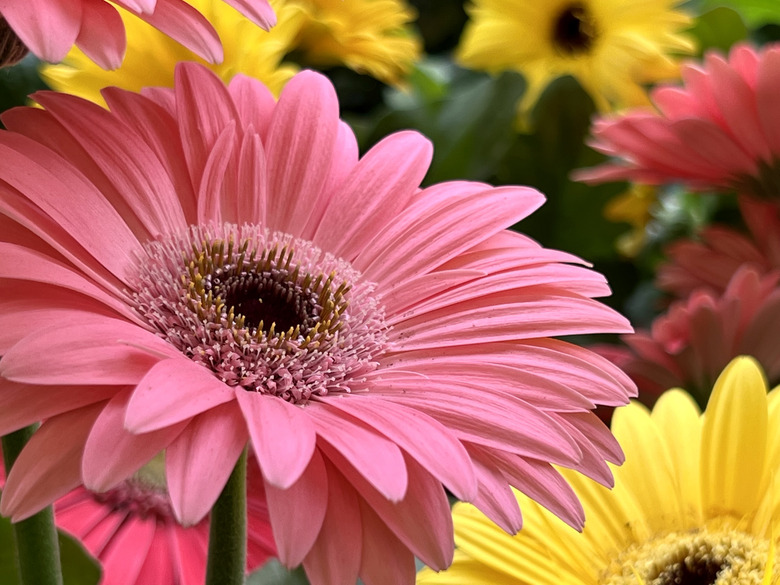How Often Do Gerbera Daisies Bloom?
We may receive a commission on purchases made from links.
Gerbera daisies (Gerbera jamesonii, USDA plant hardiness zones 8 -10), sometimes called gerber daisies, are members of the aster family, which also contains sunflowers and marigolds. These charming South African natives have long-lasting 3- to 4-inch blooms in various colors, including yellow, pink, red, white, purple, and orange; some are even bi-colored. Each flower has a leafless stem that rises about 6 inches above the plant's leaves, making gerber daisies ideal for cut flowers in bouquets. Depending on growing conditions, these flowers may grow year-round and produce new buds every two weeks.
When Do Gerbera Daisies Bloom?
When Do Gerbera Daisies Bloom?
When planted outdoors, gerbera daisies grow in spring through fall in most climates, but these heat-loving plants can bloom year-round in USDA zones 9 and 10. While they do not bloom during the winter in zones 7 and 8, they can stay alive through winter if mulched and protected from frost. Alternatively, in zones 8 and below, gardeners can bring gerbera daisies indoors, where the plants will continue to bloom as long as they get sufficient indirect sunlight.
How to Encourage Flowering
How to Encourage Flowering
Gerbera daisies will bloom over and over as long as the temperatures are right and the plants are kept happy. Here's how to get the most out of these precious perennials:
- Plant your daisies in
well-drained soil enriched with compost to ensure they will thrive. - The flowers
need full sun in northern climates, but they should be protected from hot
afternoon sun if you live in the southern half of the U.S. Do not plant in the
shade, no matter what your climate. - Add a 2-inch layer of mulch around the
plants to reduce the risk of weed growth and conserve moisture. - Let the soil dry out thoroughly before watering to reduce
the risk of root rot; then give the plant a deep watering, aiming to moisten the soil down to at least 8 inches, since gerberas have very deep roots. Avoid spraying the plant's foliage as this
can promote mildew and disease. - During your area's growing season, fertilize
the plants every two weeks with a liquid fertilizer that contains iron and manganese. - Deadhead the blossoms or cut
live flowers for bouquets. - Cut the stems down to the next stem, bud, or leaf to
encourage growth. - While you typically don't need to prune the plants
themselves, remove dead and dying leaves. - You may need to remove foliage that blocks light from reaching the crown, as producing too much greenery can limit the number of blooms the plant produces.
